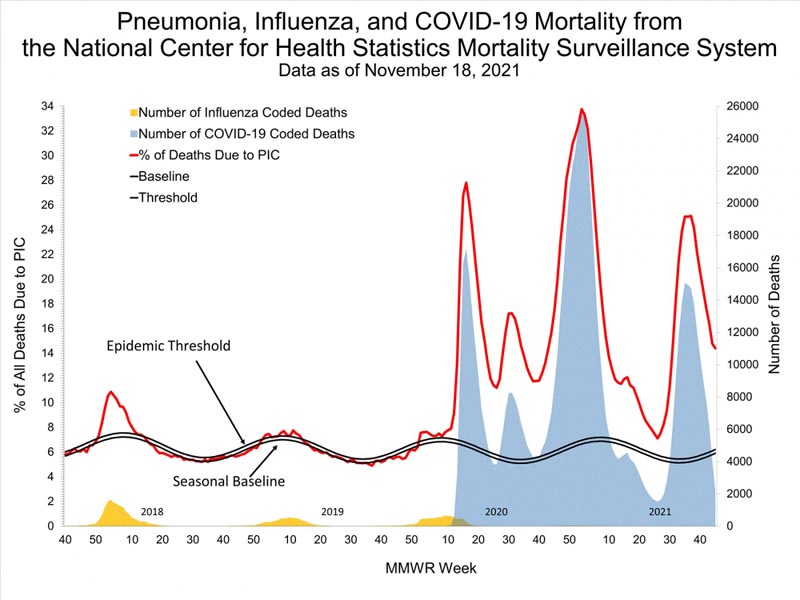These terms are sometimes incorrectly associated with the severity of the disease or the premature end of the pandemic. What do they mean? Does SARS-CoV-2 fit these definitions? Will he do it one day?
What does it mean for a disease to be endemic?
A disease is endemic when it is continuously present in a population in a specific geographic area, as defined by the book Principles of Epidemiology in Public Health Practice in its third edition. For example, malaria is endemic in many countries in Africa, Asia and America.
What is the difference between endemic, epidemic and pandemic?
While endemic refers to a constant presence of cases that do not exceed what is expected, in an epidemic there is an increase, often sudden, in the number of cases above what would be expected in that geographical area. In a pandemic this phenomenon occurs throughout several countries.
Is covid-19 endemic?
The SARS-CoV-2 coronavirus is still in the so-called pandemic phase, according to the 2005 WHO model , based on flu pandemics and which was revised after the 2009 pandemic.
After phases 5 and 6 there is an interpandemic phase in which recurrent events may still occur. Finally, the post-pandemic phase is reached, in which the disease recovers its activity at typical seasonal levels.

Pandemic phases. Phases of a pandemic. / WHO
This model is based on the flu and cannot necessarily be extrapolated to the current coronavirus pandemic, whose future is more uncertain.
“For Covid-19, other theoretical models have been proposed that attempt to contemplate non-pharmacological interventions, such as a spiral one that proposes a gradual decrease in response actions,” explains the director of the Cantabria Public Health Observatory Adrián Aginagalde.
Will Covid-19 be endemic one day?
“Not all acute respiratory infections have to become endemic,” Aginagalde clarifies. “The phenomenon is common in influenza viruses, but we do not know it for others, so the post-pandemic phase may contemplate other scenarios, not just endemicity.”
Endemicity is common in influenza, but the post-pandemic phase of the coronavirus may contemplate other scenarios. Adrián Aginagalde, director of the Public Health Observatory of Cantabria
“Beyond the reduction in risk and the phenomenon of novelty that accompanies the appearance of any disease, we do not have precedents where a coronavirus has been epidemic and subsequently endemic,” says Aginagalde.
The case of the coronavirus responsible for MERS (Middle East respiratory syndrome) would be an exceptional example, “without sustained transmission between humans and with a complex zoonotic cycle.”
What does it mean for a disease to be seasonal?
“We can talk about a seasonal disease when its prevalence is linked to a time of year,” explains health climatologist Dominic Royé, who has published research on this phenomenon in relation to SARS-CoV-2.
The most typical example is the flu: although it circulates all year round, the highest number of cases occurs in winter.
The factors that determine seasonality are very varied. “There are environmental factors such as temperature and humidity that influence transmission, because dry cold helps increase it. Also sociocultural factors, such as social contact and spending more time indoors,” clarifies Royé.
Is covid-19 seasonal?
At the moment, the coronavirus has caused spikes in cases, hospitalizations and deaths at different times of the year. In the case of Spain, and after the initial explosion in spring 2020, these have been observed in months such as November, January, April and July.
The following graph from the CDC compares deaths from covid-19 and flu in recent years. While the second appears almost mathematically around week 50, SARS-CoV-2 has been much more chaotic to date.

Deaths from flu and covid. / CDC
“Currently I consider that it is not a seasonal disease,” explains Royé. “As long as high-impact waves occur, I do not see a trend towards seasonality.”
As long as high-impact waves occur, I do not see a trend towards seasonality in covid-19. Dominic Royé, climatologist specialized in health
In the case of the Covid-19 pandemic, Royé has studied other factors at play . “The variation in the effective reproduction number explained by government interventions is six times greater than for average temperature,” she says.
In other words: “Environmental effects exist [in the case of SARS-CoV-2], but their effect is moderate and, in addition, they are much more influenced by our habits and government interventions.”
Will Covid-19 be seasonal one day?
“Estimating the moment is still very difficult,” comments Royé, who considers that this step will occur if Covid-19 becomes endemic after the pandemic phase.
Aginagalde recalls that MERS “does not seem to have a clear seasonality and has not decreased its lethality or morbidity in general.”
If it becomes seasonal and/or endemic, will that mean Covid-19 has become milder?
“Seasonality does not reduce severity,” says Aginagalde. He explains that many pandemics due to acute respiratory infections begin “on a different footing” at a time of the year that does not fit with their typical seasonality, but that subsequently become seasonal and worsen in specific periods without their severity decreasing.
Dengue, chickenpox, malaria, chagas, tuberculosis and smallpox are or have been endemic in many areas of the planet regardless of their severity.
“A simple example that being epidemic and seasonal does not modify the severity is the flu: the intensity of the 2017-18 season was considerable compared to previous years and that does not mean it stopped being epidemic or seasonal,” he adds. In other words, seasonality is a label that describes the distribution of a disease over time without having implications for its severity or mildness.
Something similar happens with the concept of endemism, which only refers to the constant presence of a disease in a geographic population. Dengue, chickenpox, malaria, Chagas, tuberculosis and smallpox are or have been endemic in many areas of the planet, sometimes for thousands of years, regardless of their severity.
But don’t viruses fade over time?
The idea that parasites evolve towards a more or less peaceful coexistence with their host in an almost predestined way is a widely held dogma, but often criticized by evolutionary biologists. Counterexamples range from measles to polio, including rabies and AIDS.
Paul W. Ewald, an evolutionary biologist specializing in parasitism, widely criticized this dogma in his 1994 book Evolution of Infectious Disease. “Few ideas have been so deeply rooted in literature […] Few ideas in science have been so widely accepted with so little evidence. And few ideas are so at odds with the fundamental principles on which they are supposedly based,” he wrote. When talking about principles he was referring to the theory of evolution by natural selection.
The idea that parasites evolve towards peaceful coexistence with their host in an almost predestined way is widespread, but is criticized by evolutionary biologists.
Criticism is based on the fact that natural selection acts at the level of the individual, without thinking about the common good of the species or the future. That’s why the parasite doesn’t care what happens to the host once it has been successfully transmitted, so attenuation is not an inevitable fate. For example, in diseases such as AIDS and Covid-19, the virus can be transmitted long before the patient reaches the hospital.
A separate issue is that the population immunity achieved against a new pathogen, through infections or vaccines, can give the impression that the disease is no longer as harmful as it was at the beginning.
So what is the future of the Covid-19 pandemic?
“If it followed the model of the 1918 flu, there would be seasonalization and a reduction in its spread and severity,” says Aginagalde, who considers that it is not “the best precedent” due to the extraordinary warlike circumstances in which this pandemic took place.
It could happen that SARS-CoV-2 ends up being endemic and seasonal, but we do not have previous data to extrapolate. We must answer honestly that we want it, but we do not know it. Adrián Aginagalde, director of the Public Health Observatory of Cantabria
“Nor do the cases of the flu pandemics of the 1950s and 1960s seem to be extrapolated, which were short-lived; or the Russian flu of 1889, which caused excess mortality for many years afterwards without losing intensity in the different waves, like most nineteenth-century flus.”
“It could happen [that SARS-CoV-2 ends up being endemic and/or seasonal], but we do not have data on previous coronaviruses to extrapolate and the influenza pandemic models have limitations to support the statement without a hint of doubt,” adds Aginagalde. “We must answer honestly that we want it, but we don’t know it.”
Source: SINC
Rights: Creative Commons
















